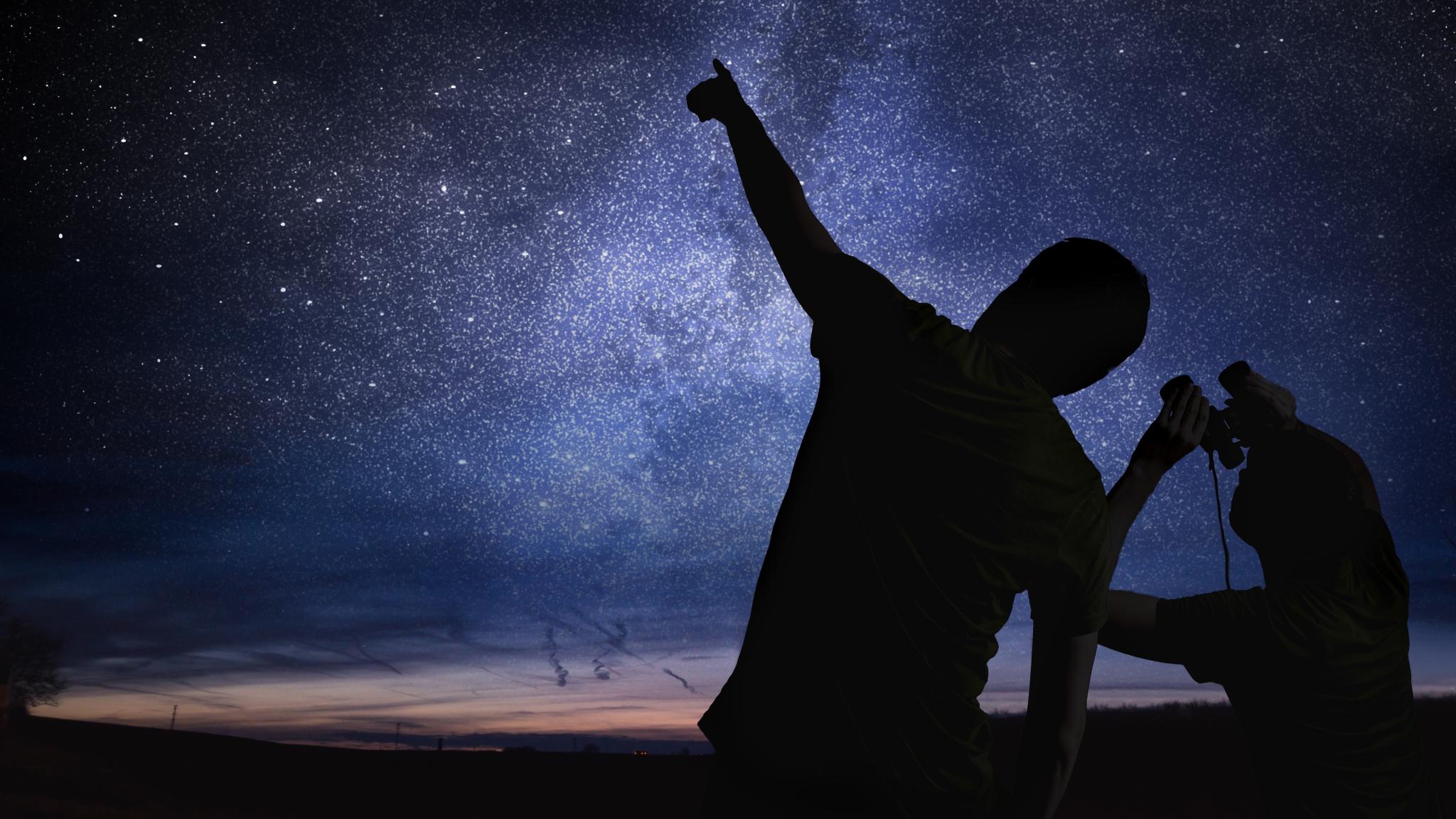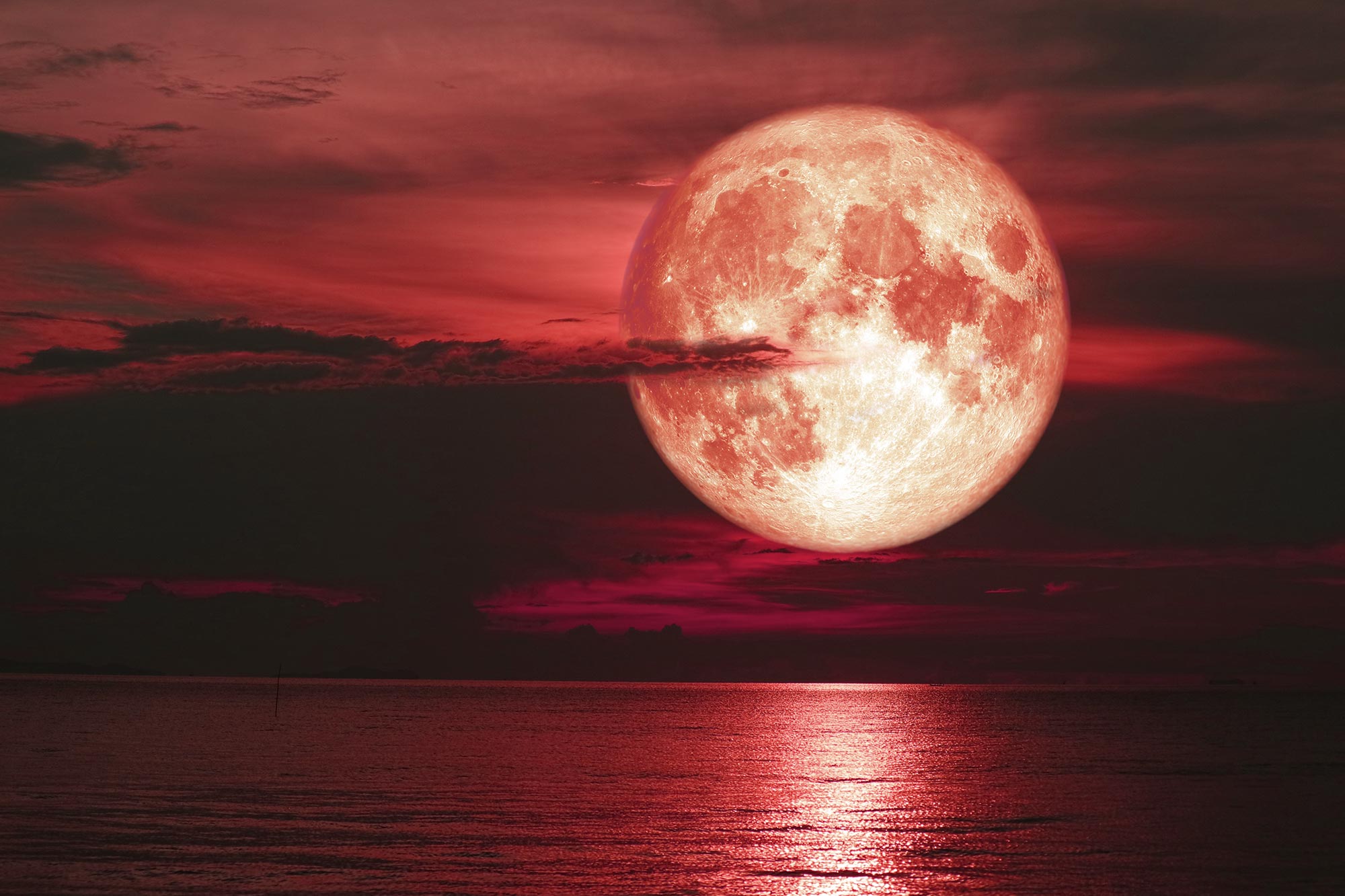June skywatching starts big: On the 1st, the Moon, Saturn, and Mars meet! The Full Moon rises on the summer solstice this year. And what’s this about a “parade of planets” in the news? Astronomer Bob Berman weighs in.
Planets on Display
Venus is visible once again as an “evening star” this month! It will be visible in the west after sunset. Some nights, it looks so bright that people in the past (and, ahem, even in the present) have mistaken it for a UFO!
June 1: Crescent Moon and Mars
June skywatching starts big. Set your alarm for 4:30 A.M. on June 1. You’ll be rewarded with a captivating crescent Moon between Saturn and Mars. Both planets will have the same 1-magnitude brightness. The Moon is a 31% waning crescent.
June 3: Planet Parade or Hype?
Then, due East, on the mornings of June 2 and June 3, you can better locate Mars before sunrise. The red planet is the bright orange “star” next to the Moon. The Moon is a 12% waning crescent so that Mars will be more visible. Saturn is also on display.
Much of the media has touted June 3 as a “Parade of the Planets,” stating there will be a rare planetary alignment of six planets.
There are only 8 major planets in our solar system. One is the Earth below your feet. One is Venus, now hidden in the sun’s glare. But the internet has been buzzing with the fact that the other 6 planets – Saturn, Neptune, Mars, Uranus, Mercury, and Jupiter – all will grace the eastern sky before sunup in the first days of June.
What’s the real story? Yes, the planets ARE truly in the sky. No, you won’t see them with the naked eye. From our planet’s perspective, you won’t see Mercury (too close to the Sun), Jupiter (also very close to the Sun), Uranus (only with a telescope, maybe), and Neptune (ditto).
What will you see? A couple of beautiful planets: Mars and Saturn. And don’t forget, you have to wake up before dawn. This is still an interesting event in that we “know” it’s happening, but you won’t see much during the wee hours of the day! Better observing events are on this page!
After June 15, the giant planet Jupiter returns to our naked-eye view as an early morning star.
June 30: Planet Conjunction
On the 30th of June, mark your calendars for a brilliant conjunction, with Mars hovering halfway between the Moon and Jupiter.

Spotlight on the Moon
June 6: New Moon
Prefer to stargaze and ponder the cosmos? June 6 is your best opportunity, with the new Moon peaking at 8:38 A.M. Read more about the new Moon.
June 20: A Summer Solstice Spectacle!
The 20th (at 4:51 P.M.) marks the first day of summer for the Northern Hemisphere and the longest day of 2024 in the Northern Hemisphere. This is the day when the Sun is the highest at midday, rising from its leftmost position and setting at the year’s rightmost spot on the horizon.
June 21–22: Solstice Strawberry Moon
Get out the strawberries and cream! Yes, June’s Moon is traditionally called the “Strawberry Moon.” Find out why on our June Full Moon page.
This year’s Strawberry Moon brings with it something extra. This year, we will see an unusually amber, low-down lunar placement at 1 AM on the night of June 21 to 22. Since the Full Moon is always opposite the Sun, it uses the solstice occasion to sink to its very lowest point in the zodiac, in Sagittarius. But there’s more … due to the tilted orbit of the Moon, it will be in its LOWEST position for the next 18 years.
So watch the Moon that night if you’re awake in the hour after midnight. While a “low” Moon may not sound overly exciting, it really stands out when viewed in person. And, after all, such once-every-18-years events only appear a few times in one’s life. Check out our list of must-see sky-watching phenomenons for 2024 (hint, hint, this made the list).

June Stargazing
Click here for the June Sky Map to see a start chart for this month!












